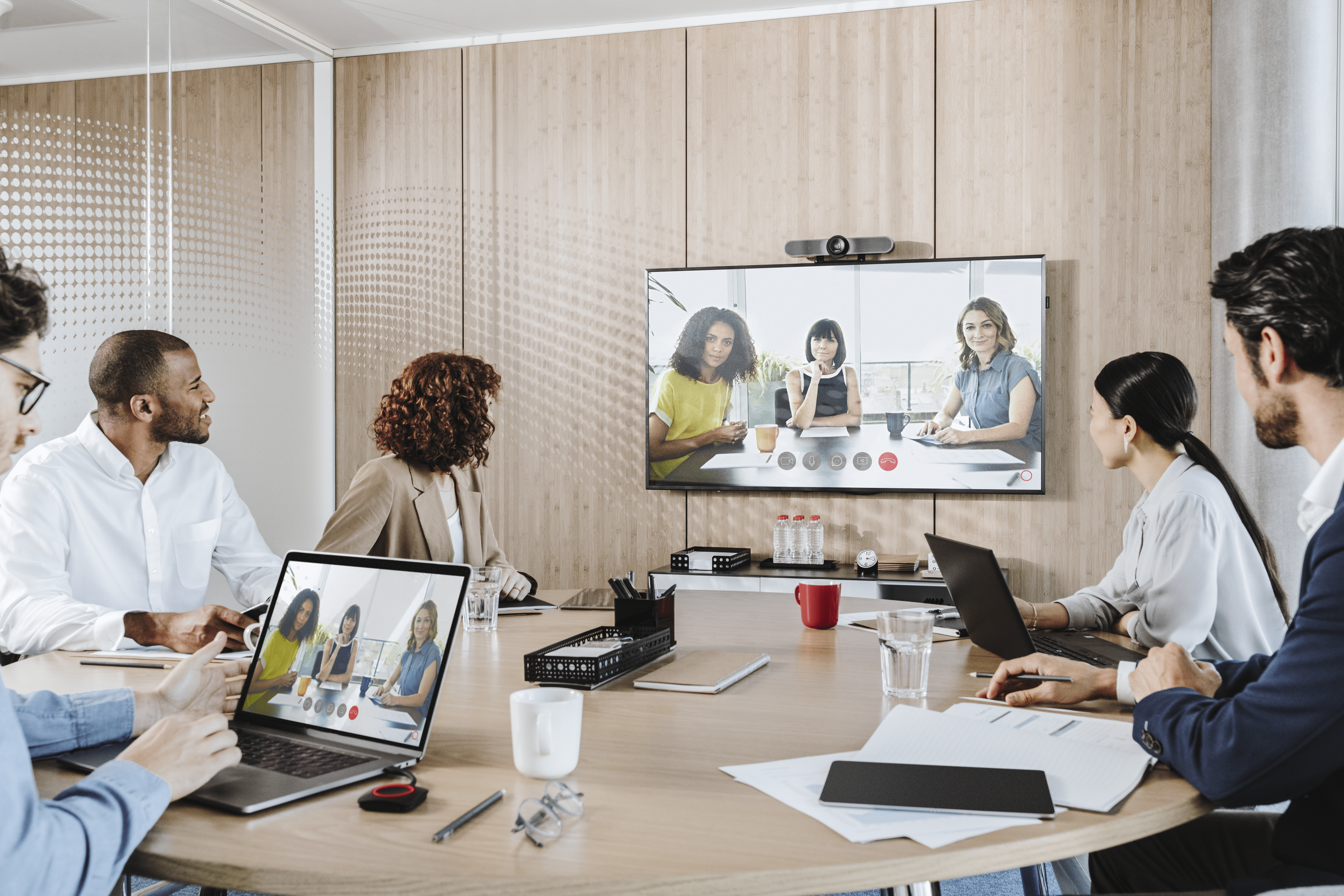How to realise the potential of a hybrid work model
THE ARTICLES ON THESE PAGES ARE PRODUCED BY BUSINESS REPORTER, WHICH TAKES SOLE RESPONSIBILITY FOR THE CONTENTS

Barco is a Business Reporter client
Making the most out of an efficient hybrid work model in the post-pandemic era
The pandemic has irrevocably changed office culture, rapidly evolving a trend for remote working into a core part of the mainstream employee experience. While remote working is here to stay, the consensus from employees themselves is that a return to some regular office-based interaction is important. In fact, Barco hybrid meeting research shows that eight out of ten office workers are in favour of a hybrid work model, with most, on average, willing to work from home just one and a half days per week.
Understanding this, most businesses have already started to implement various kinds of long-term hybrid systems, which can offer a mix of office-based and remote working.
This is, of course, great news, not only for the employee experience, but also the overall performance of businesses. Such hybrid models should, in effect, offer white-collar workers the best of both worlds – that is, more time to work productively and stress-free from home, as well as an opportunity to catch up with colleagues and make use of the professional backdrop of the office for important meetings.
Hybrid working: the challenges
However, as with the implementation of any new system of working, there are challenges to overcome. If hybrid business models are to be productive and successful – if their potential is ever to be truly realised – then meeting room technology issues must first be acknowledged and resolved.
CIOs and IT decision makers must, in the first instance, work out how to ensure widespread user adoption of meeting room technologies. Despite the general enthusiasm for hybrid collaboration, most white-collar workers have little to no inclination to give up their new-found laptop-centric approach to meetings, with 71 per cent preferring to host hybrid meetings from their own laptops.
Since they started working from home, employees have been able to avoid complicated meeting room set-ups and easily host and join meetings from their laptops, using their preferred video conferencing platforms. More to the point, according to the latest Barco research, they now see no reason to do things differently, with a remarkable 70 per cent of 800 white-collar workers surveyed from across the globe insisting they would rather use their own laptops than in-room systems.
Disillusioned with current office technology infrastructures, 65 per cent admitted to struggling with different meeting room set-ups, and a further 48 per cent with connecting to AV peripherals such as displays, cameras, speakers and microphones. Alarmingly, these challenges have caused a stunning 71 per cent of workers to experience stress during hybrid meetings.
Bring your own meeting (BYOM) solution
The widespread adoption of hybrid meetings, it would seem, will ultimately hinge on the roll-out of a more inclusive and intuitive meeting technology solution. An overwhelming 81 per cent of white-collar workers across every age group agree that easy-to-use technology facilitates better meetings. Most would agree that the very process of ideation and innovation depends on making real connections during a meeting, with over one third (42 per cent) believing in the necessity of having personal conversations to generate ideas.
For a successful digital workplace strategy, businesses will therefore need to support hybrid meetings that are as seamless and intuitive as face-to-face collaborations. One way to achieve this is by offering, for in-person as well as virtual environments, a “bring your own meeting” (BYOM) experience. With BYOM, users can host and join video meetings and share content using their own preferred conferencing platform in any existing meeting room or space from their own device.
A high-quality audio-visual experience
Wireless presentation and conferencing systems such as Barco’s ClickShare harness the power of BYOM, enabling employees in the office to join meetings from their laptops with just one click. Instantly connecting employees to the meeting room display and its AV peripherals, such solutions boost productivity and collaboration, allowing for a more deeply immersive, high-quality audio-visual experience.
Thanks to their universal compatibility with most in-room systems, peripherals, UC&C platforms and agnostic collaboration tools, ClickShare is easy to integrate into most existing meeting room set-ups, offering a much more inclusive and familiar meeting experience for users.
Safe and future-proof hybrid collaboration
Of course, the successful transition to a hybrid style of collaboration will depend on the implementation of future-proof, secure technology. ClickShare is an IS0 27001-certified enterprise-ready solution, safeguarding against future cyber threats and enabling data to be shared safely. As well as ensuring privacy and confidentiality online, such tools are now able to offer ongoing support, and include warranties of up to five years in addition to a continuously enhanced user experience with an ever-increasing range of features and functionality.
To facilitate the digital transformation of workplaces, CIOs and IT decision makers must also monitor adoption as well as productivity and engagement. The best way to do this and prove return on investment is to look for conferencing systems that offer advanced data and analytics.
After nearly two years of remote working, work culture has been transformed. And while many of us have returned to the office, the role of the office and office etiquette are still evolving. The future of hybrid working is already starting to take shape, but to reap the benefits of all the advantages that it brings, workspaces will have to be reimagined with intuitive, flexible and familiar meeting room technologies that employees are able – and willing – to use.
At the beginning of the year, we launched the ClickShare Hybrid Meeting survey, which revealed the attitudes and preferences of modern workers as business leaders adjust operational models, workspaces and organisational cultures in alignment with evolving professional dynamics.
For more information on the full report, and for a full download, click here
Originally published on Business Reporter

Bookmark popover
Removed from bookmarks